audio_sample, sampling_rate = librosa.load('a.wav', sr=None)
S = np.abs(librosa.stft(audio_sample, n_fft=1024, hop_length=512, win_length=1024, window=signal.hann))
mag_db = librosa.amplitude_to_db(S)
mag_n = _normalize(mag_db)
librosa.display.specshow(mag_n, y_axis='linear', x_axis='time', sr=sampling_rate)
I did some stft and then spechow. but I want to find the point(time) where wave discontinuity.
example) I want to know discontinuity point of the wave file

